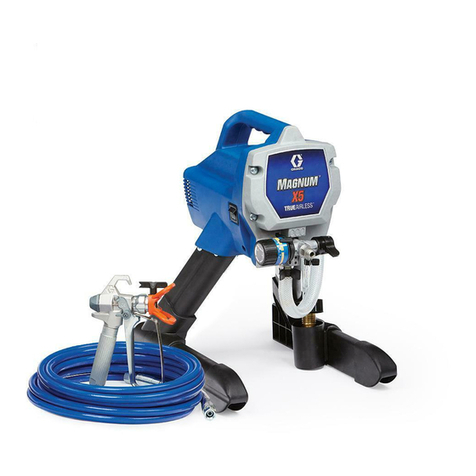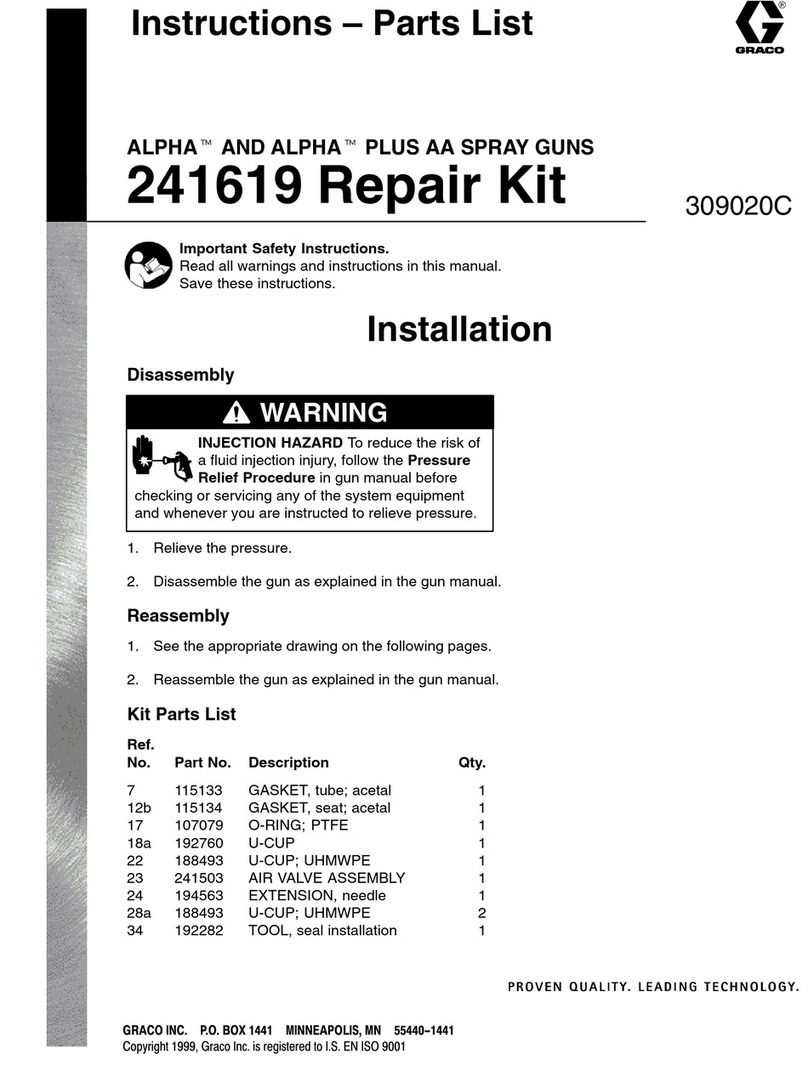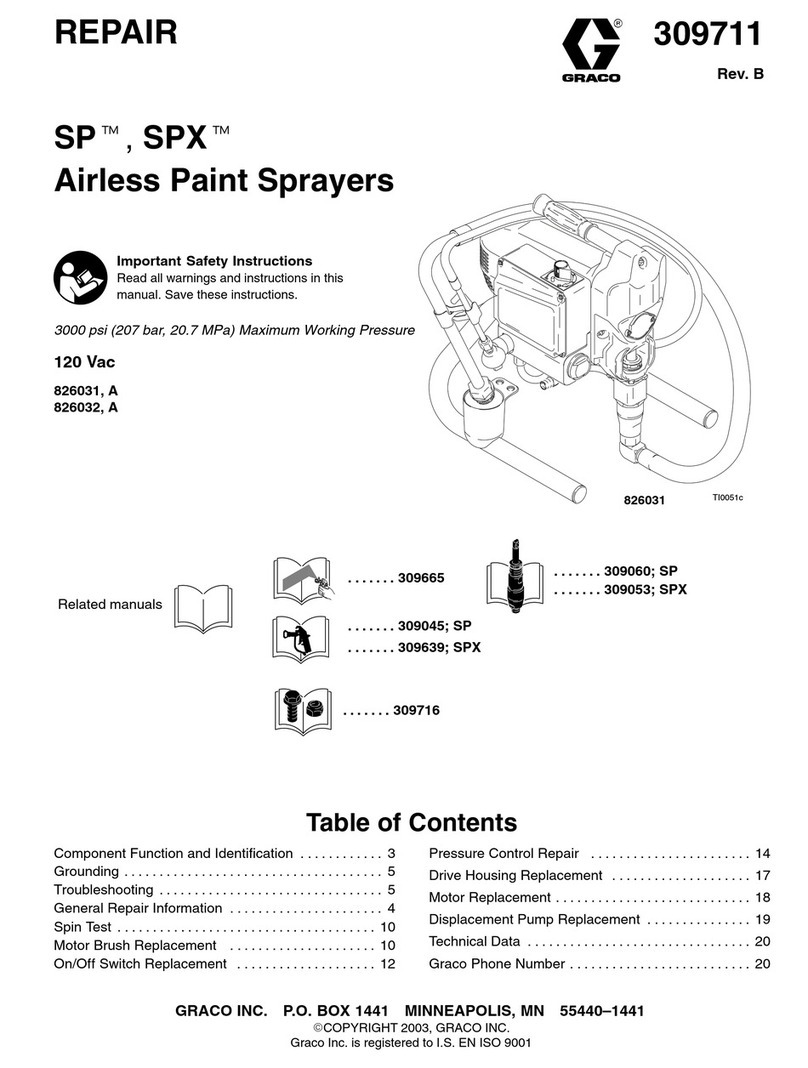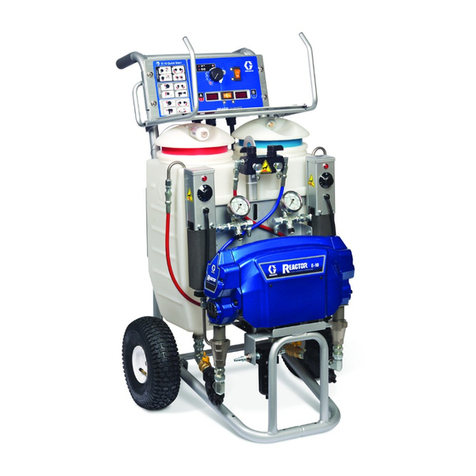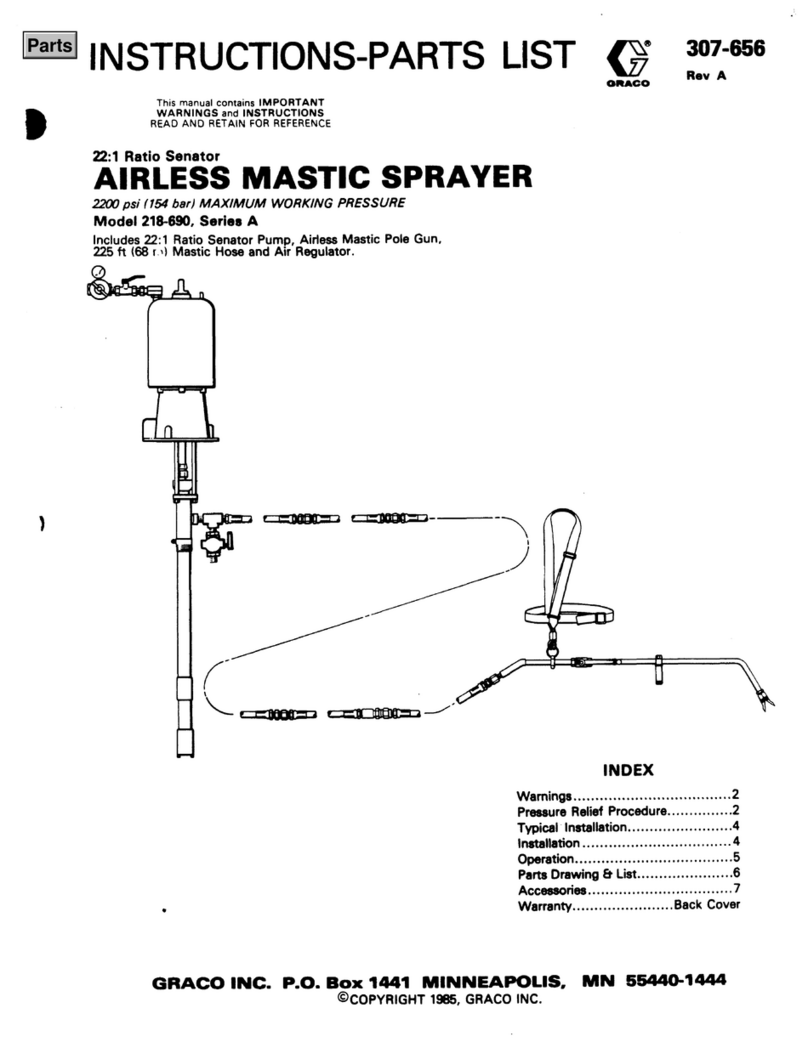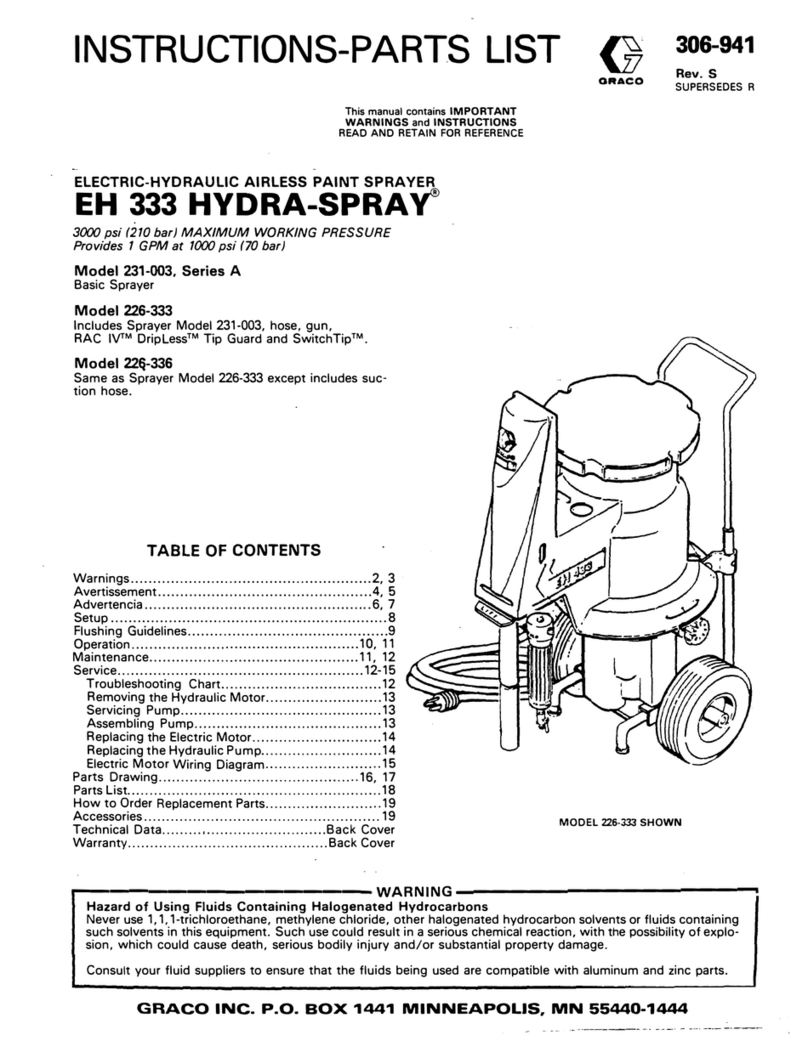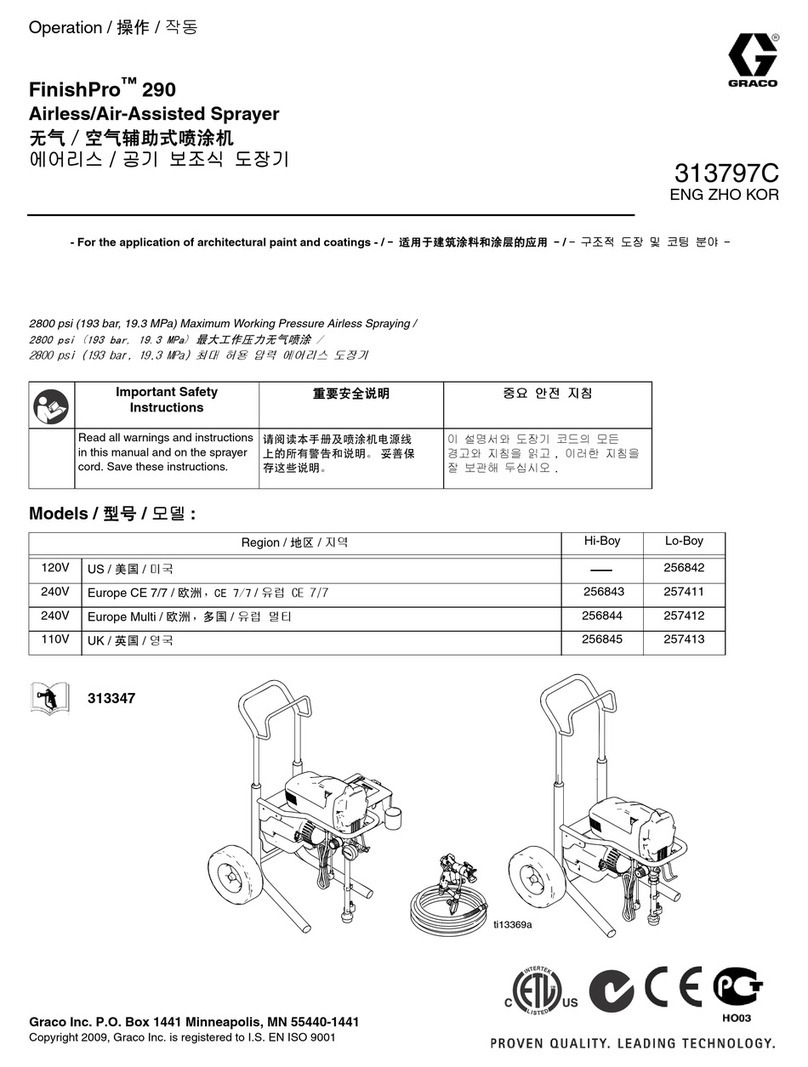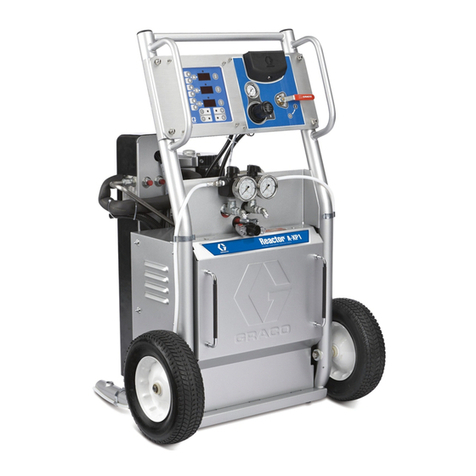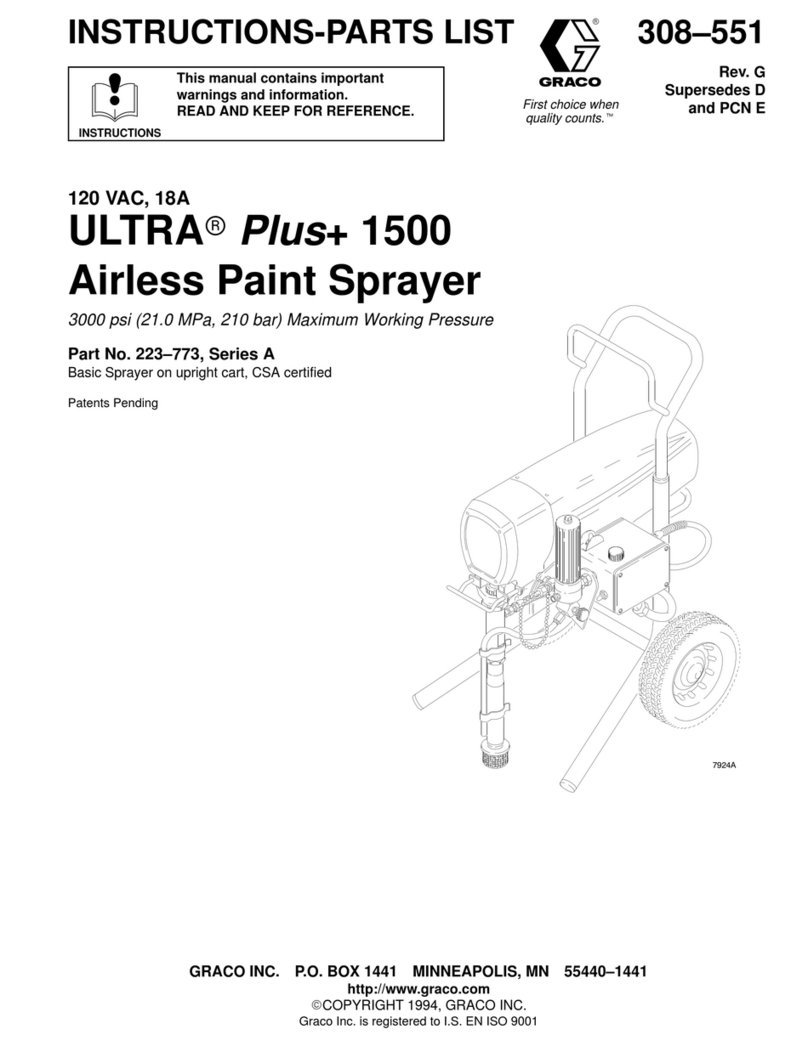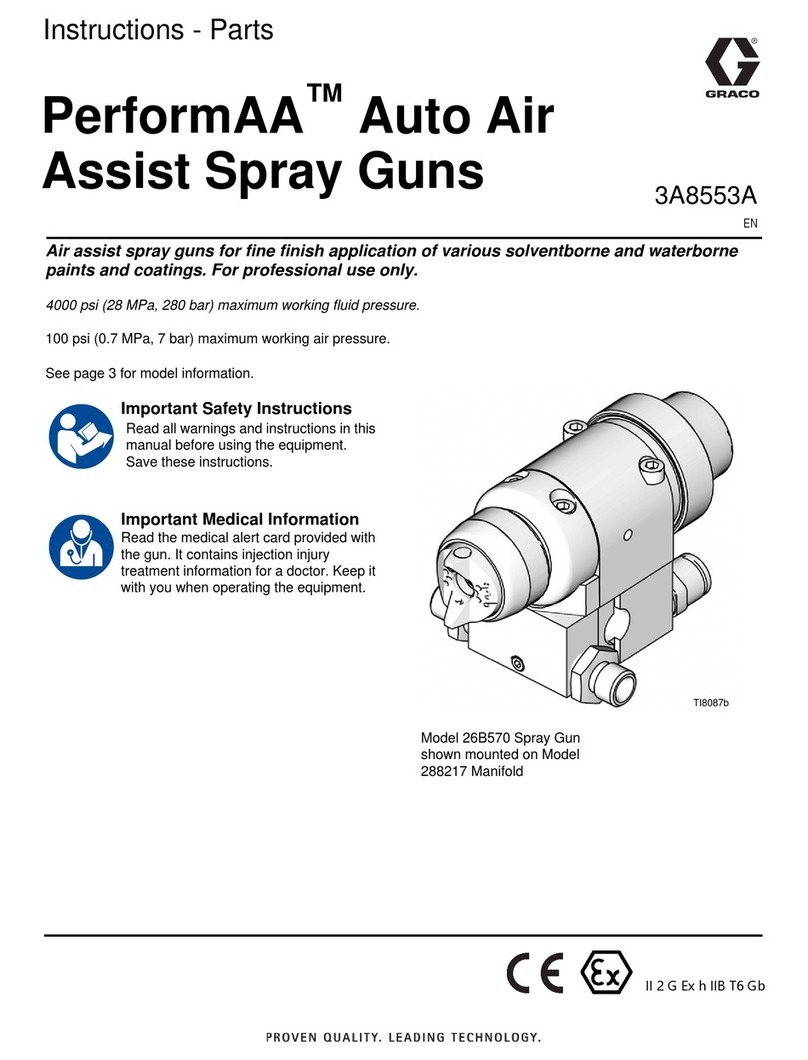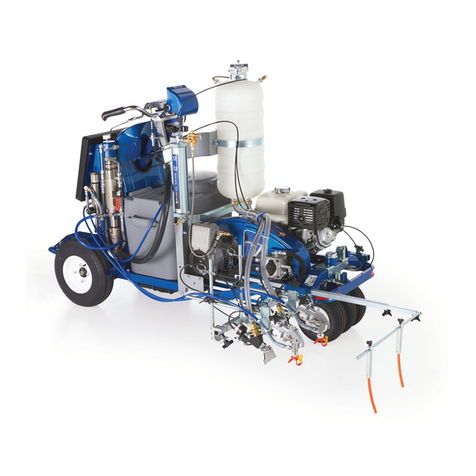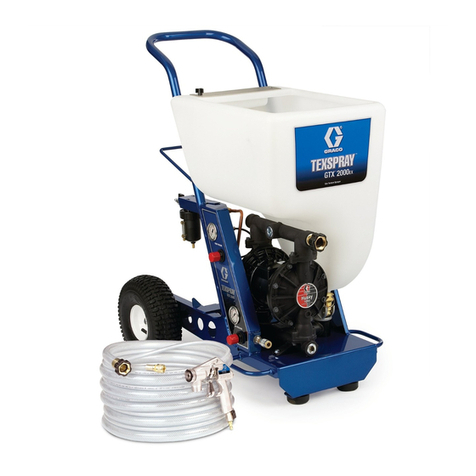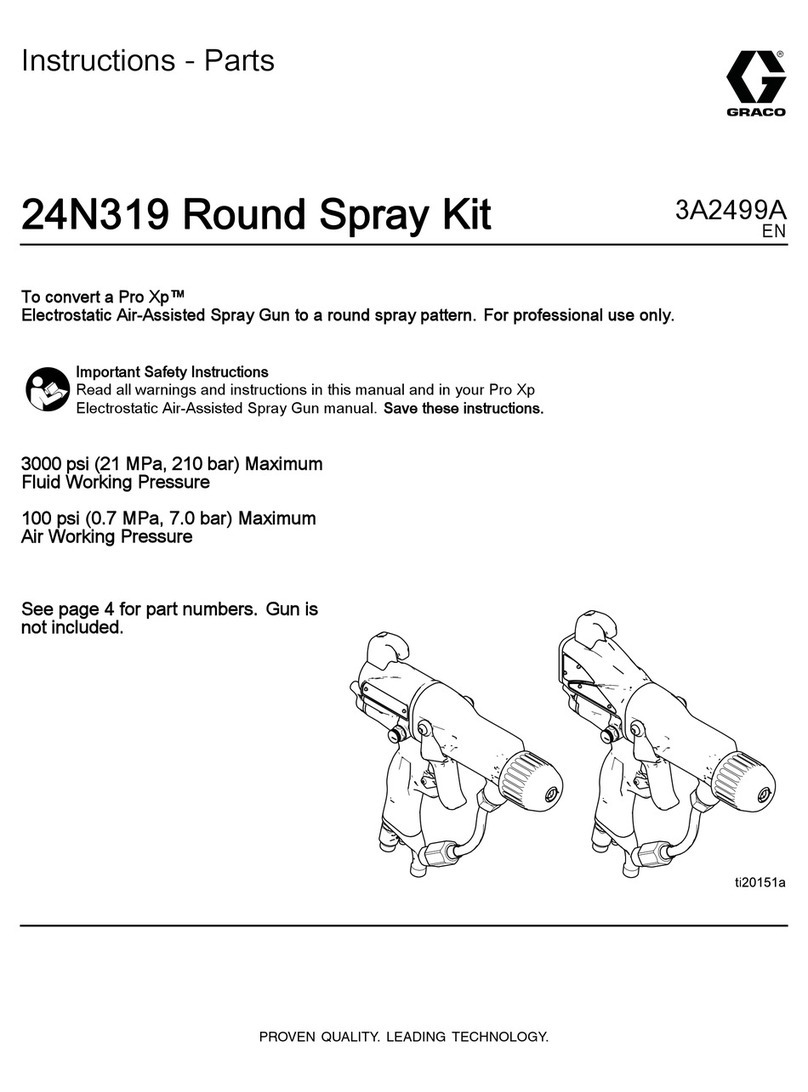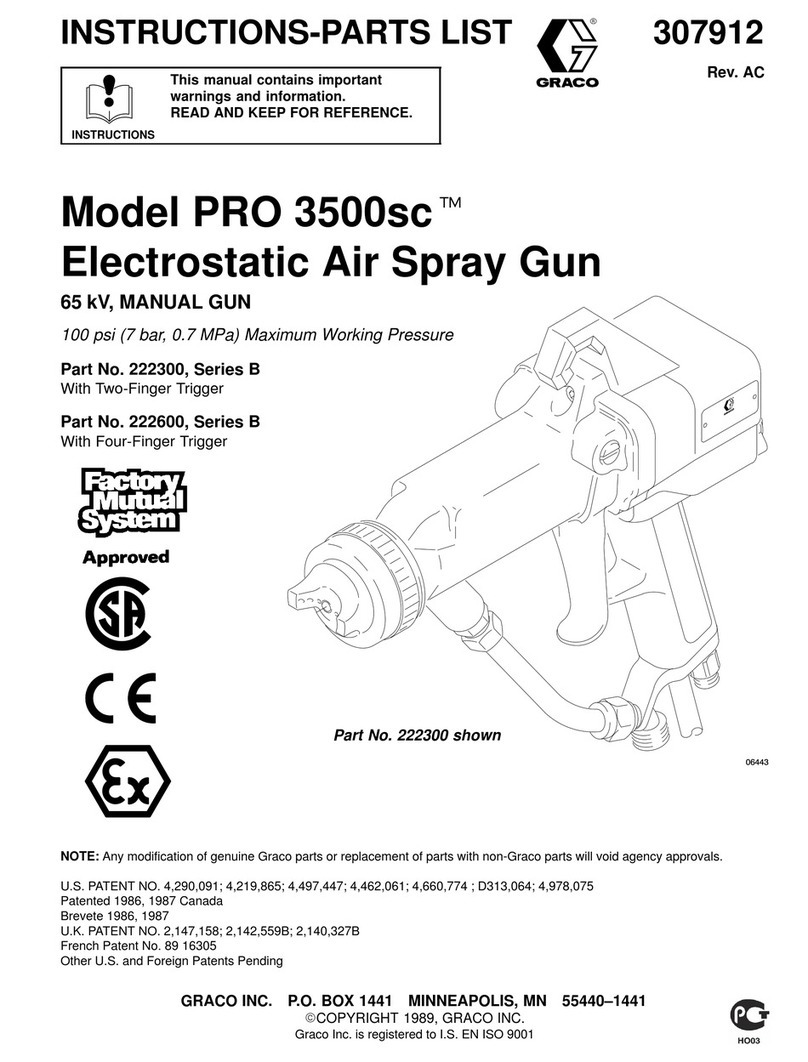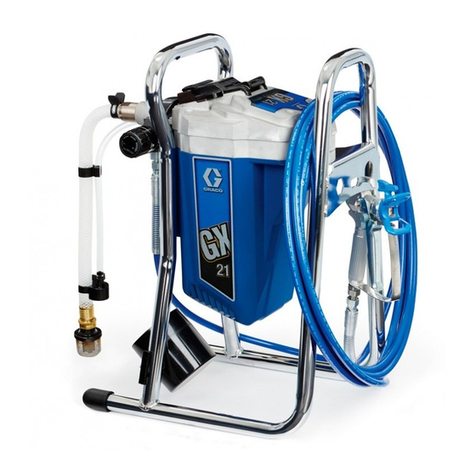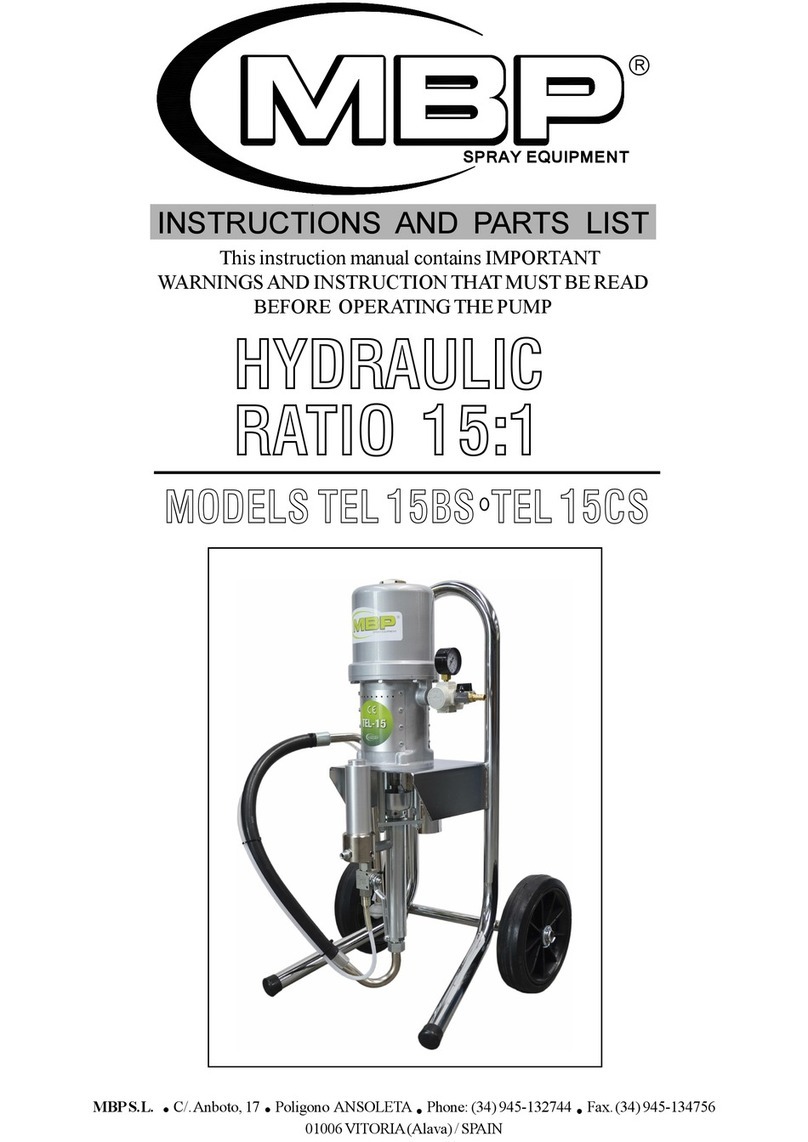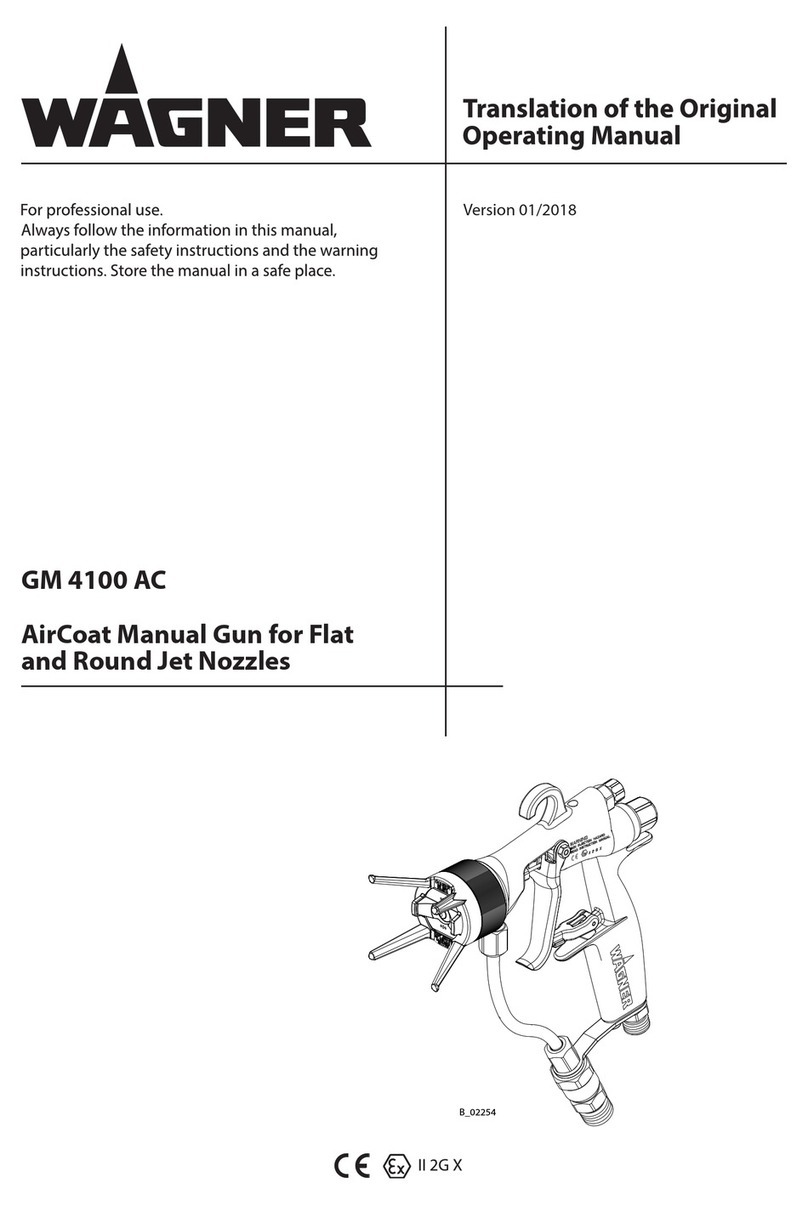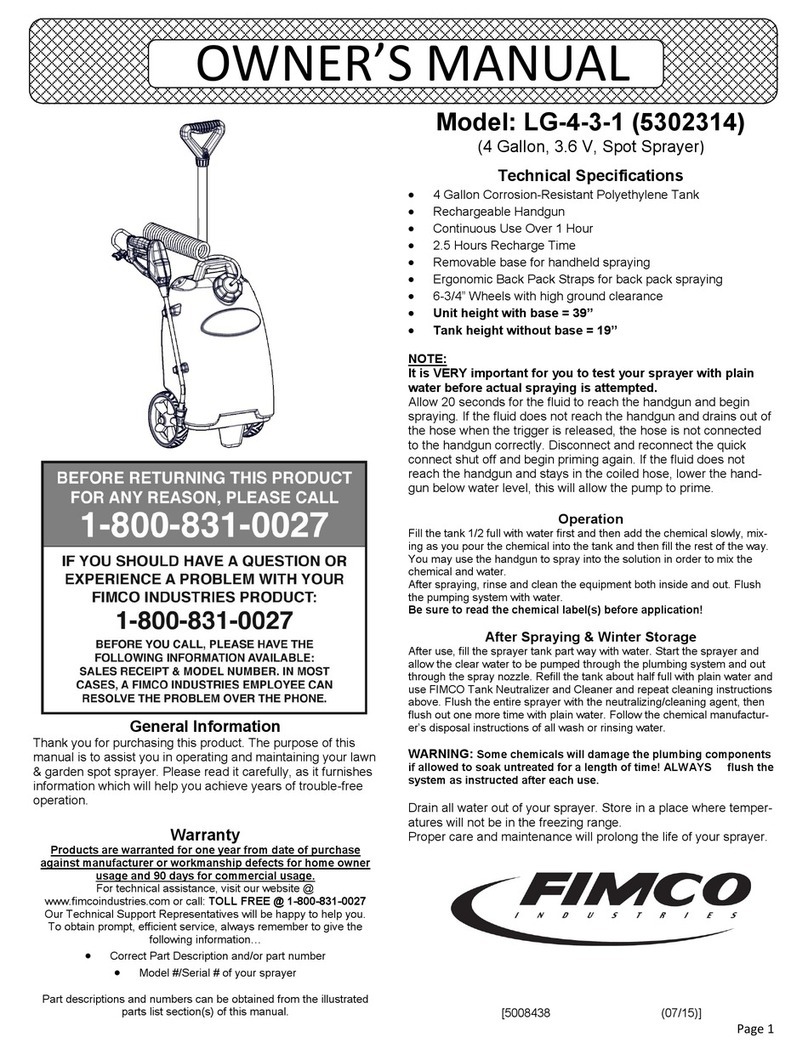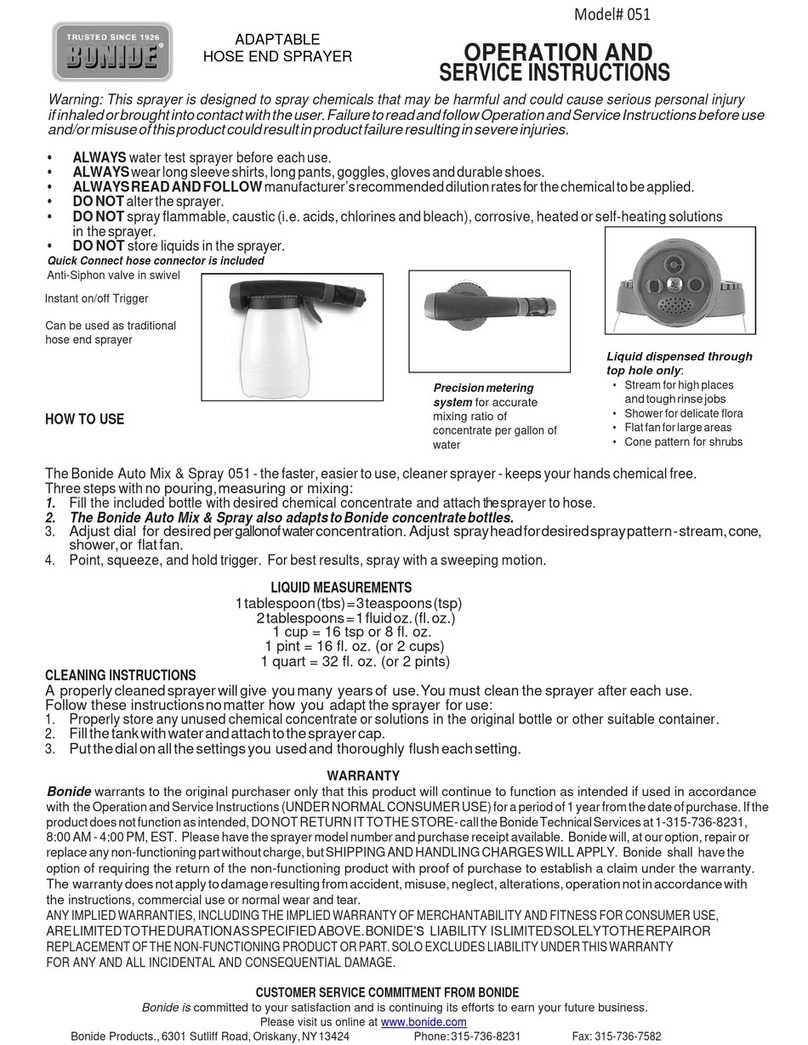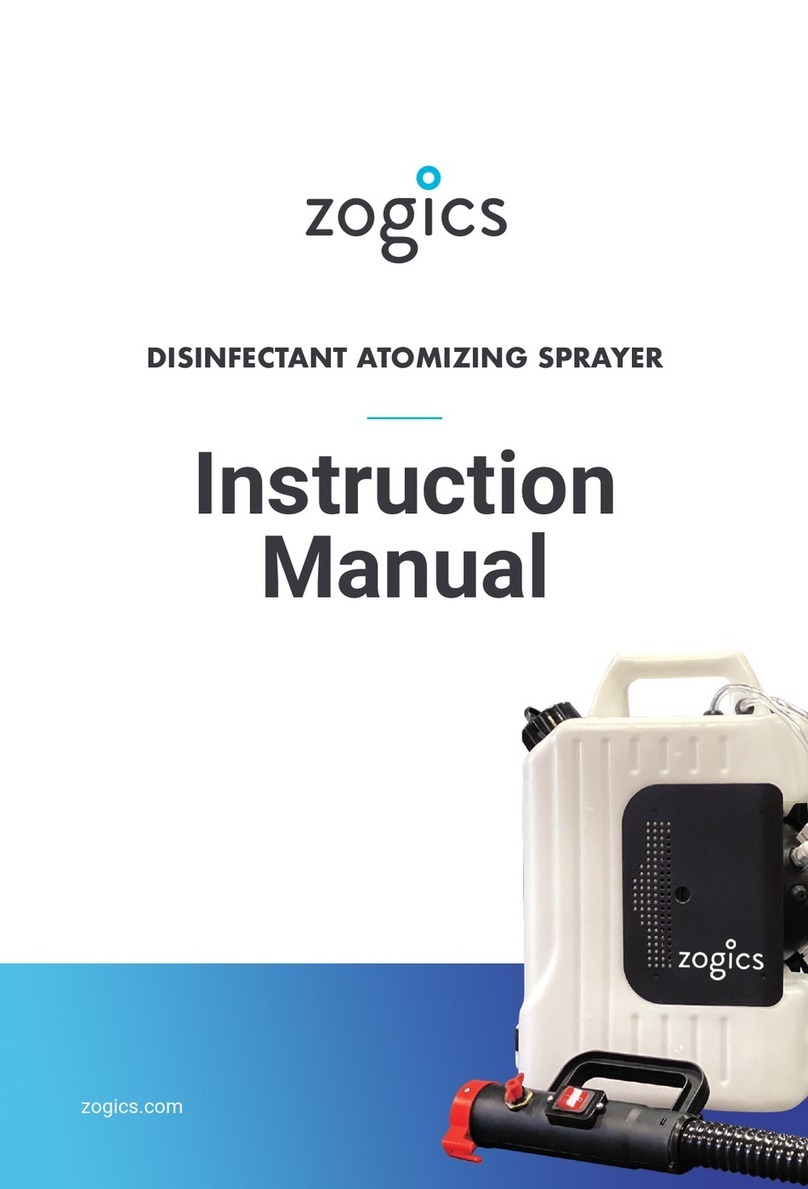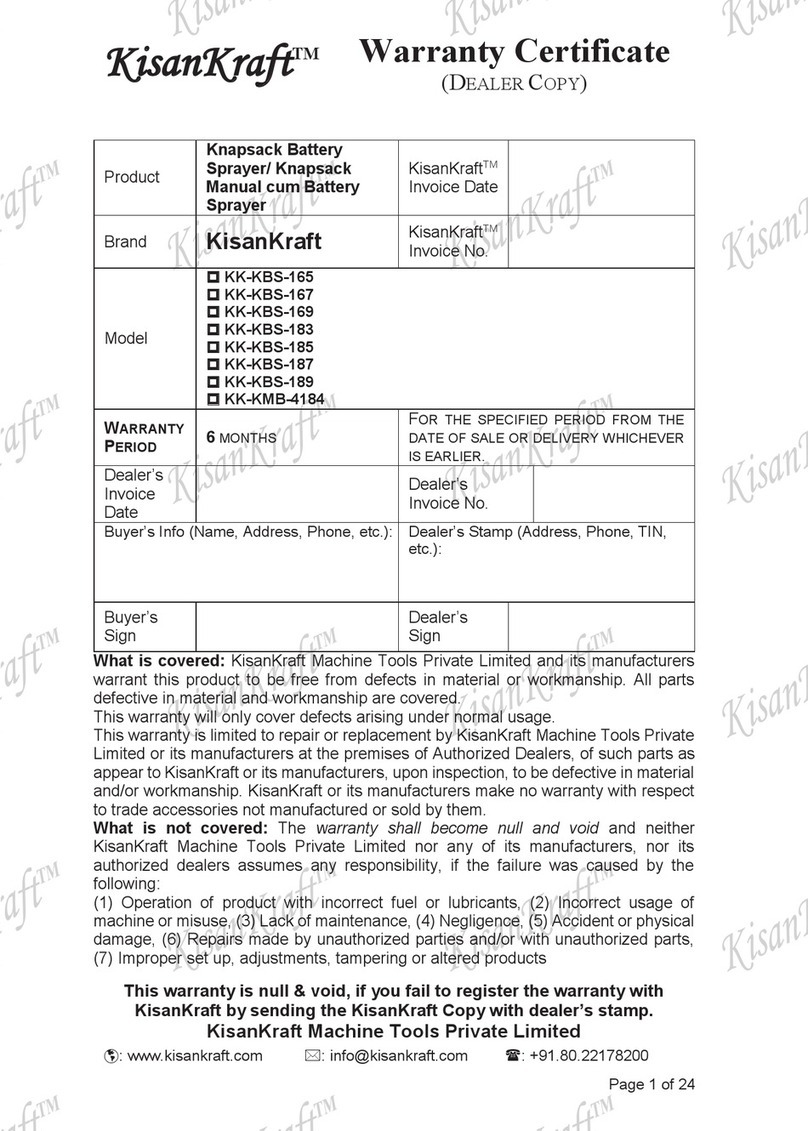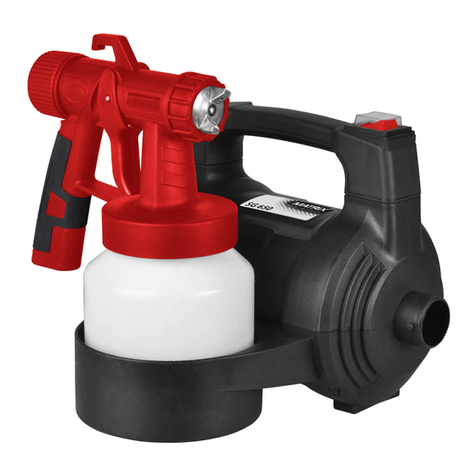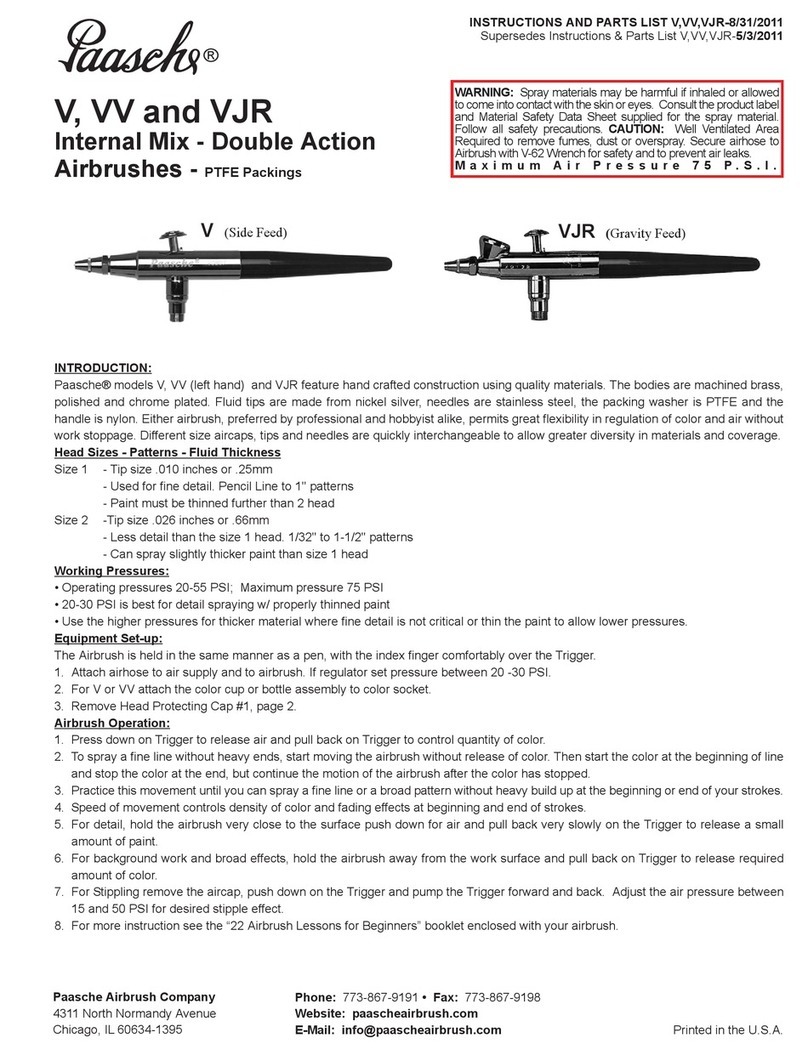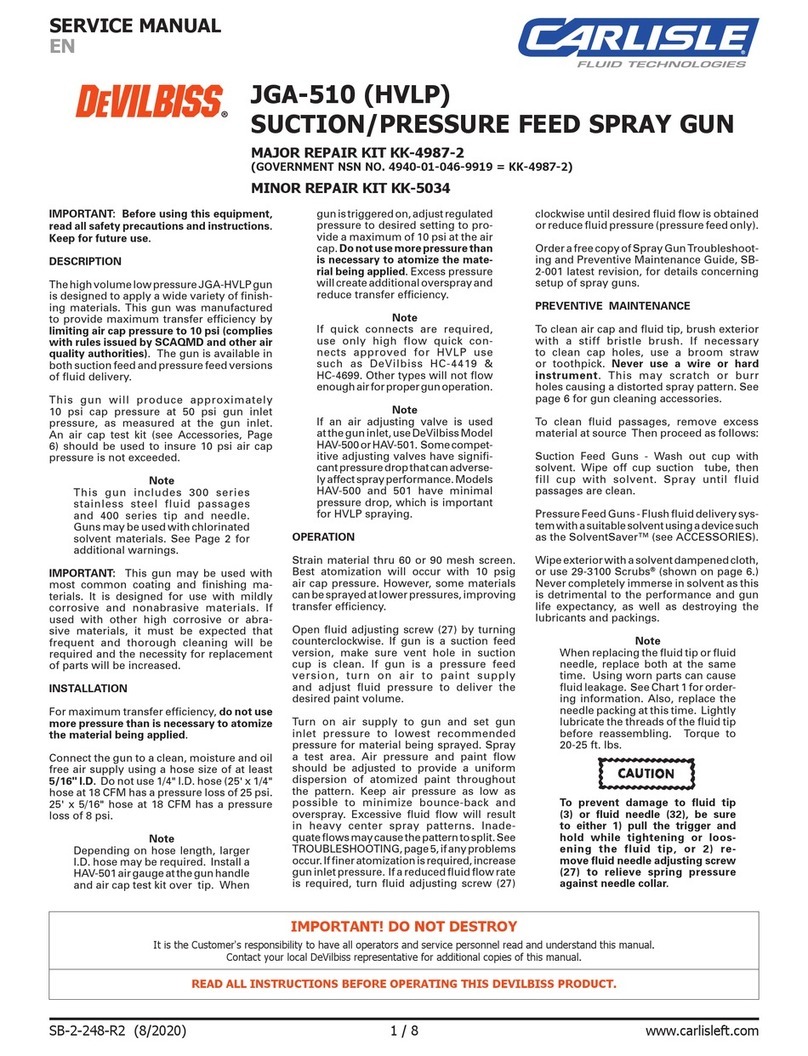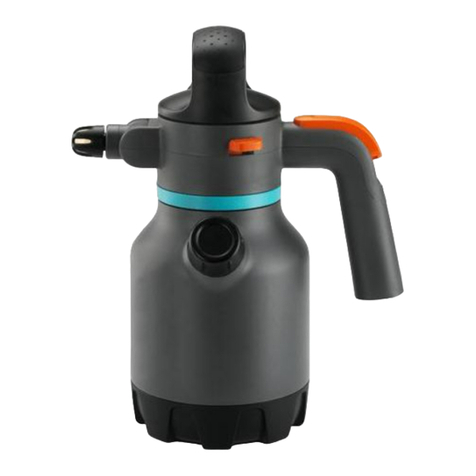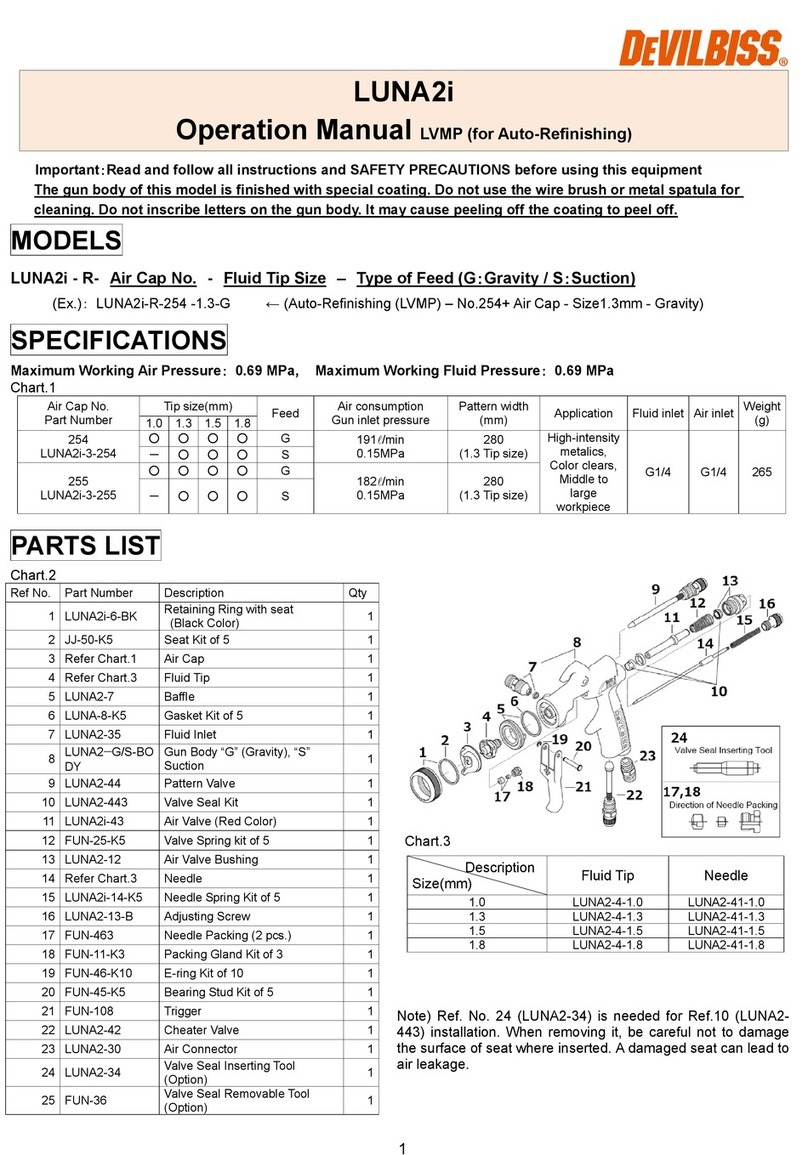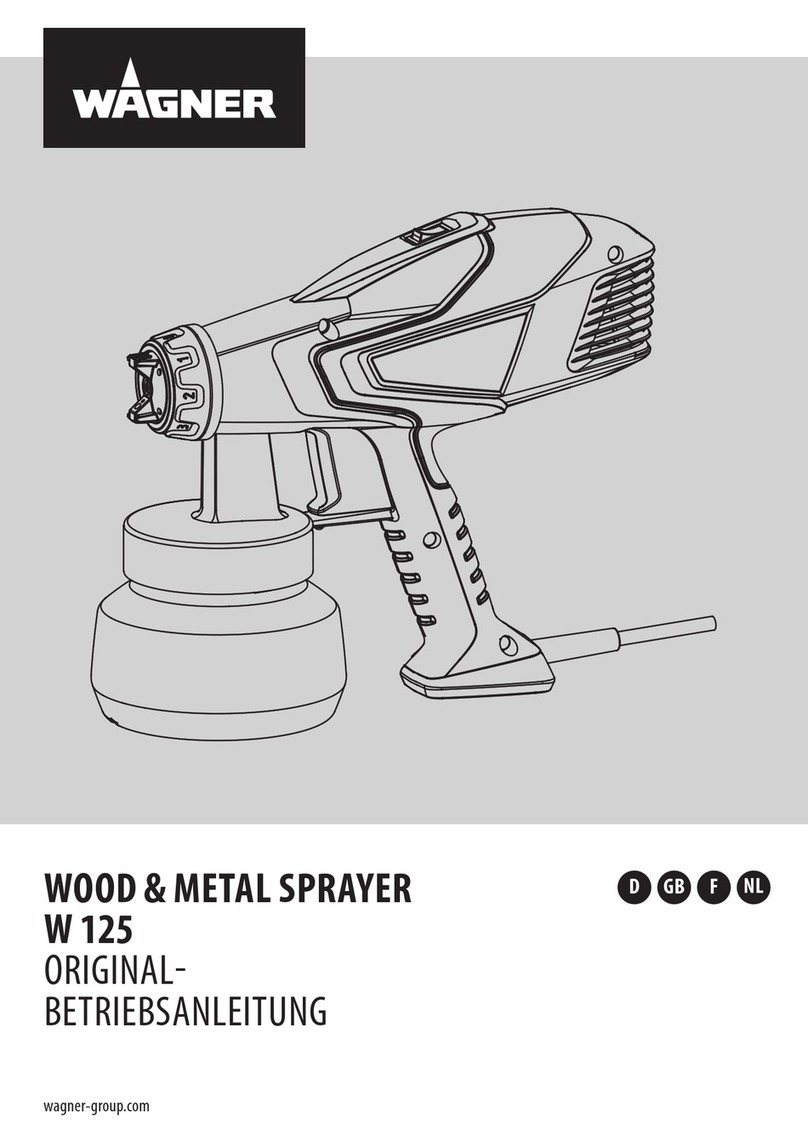
7308274
Operation
EQUIPMENT MISUSE HAZARD
In the GM 1030 TexSpray, the fluid pres-
sure is relieved automatically when the
gun trigger is released. However, to
further reduce the risk of injury, including injury from
moving parts, always follow the Pressure Relief
Procedure when you are not spraying and before
checking or adjusting the system.
WARNING
INSTRUCTIONS
Pressure Relief Procedure
1. Turn the Flow Control to OFF.
2. Turn the engine stop lever to OFF.
How to Adjust the Spray Pattern
1. Be sure the Air Control Valve (11) is turned in fully
to prevent air from mixing with the fluid. Note that
the air will exit the rear of the gun.
2. While triggering the gun, adjust the engine RPM to
determine fluid flow and pressure. A good starting
point is to adjust the fluid flow until you have an 8
in. (20 cm) stream.
3. Holding the gun 18 to 30 in (0.5 to 1.0 m) from a
test surface, test the spray pattern while turning
out the gun’s Air Control Valve (11) which allows
the air to atomize the fluid. Adjust the Air Control
Valve to obtain the desired spray pattern.
TIP: More fluid flow = more air,
and less fluid = less air.
4. If you cannot get a good spray pattern, try
adjusting the air regulator pressure or try another
spray disc and nozzle combination.
To Prevent Material Surge at the
Beginning of a Spray Pattern
1. Always trigger the gun fully.
If the gun is triggered partially, which only triggers
the air portion of the system, the pump will start
and pressurize the hoses. Then, when you
complete the triggering action, you will get a blast
of unatomized material.
2. When you release the gun trigger, allow the
material to completely depressurize before
triggering the gun again.
Failure to do this will result in spraying some
unatomized material, and may cause material to
back up into the gun air passages and block air
flow. Longer hoses and heavier material may take
several seconds longer to depressurize.
As you test the spray pattern, also determine how
long it takes to depressurize the system and keep
that in mind as you are working.
Fluid Nozzle and Spray Disc Selection
Three spray discs and nozzles are supplied with the sprayer. The nozzles are numbered 1, 2 or 3 – the larger the
number the more scfm is required. These parts can be interchanged to produce a pattern suitable for each job. Use
the chart below to help determine the right combination for your application.
Material Fluid
Spray Discs (by aggregate size)
Nozzle Fine Medium Coarse Extra Coarse
Elastomerics #3 1/8” 1/4” 1/4” or 3/8” 3/8”
Simulated Accoustical #2 1/8” 1/4” 1/4” or 3/8” 3/8”
Splatter Coat* and
Knockdown
#1 1/4” or 3/8” n/a n/a n/a
Orange Peel #2 1/8” or 1/4” n/a n/a n/a
